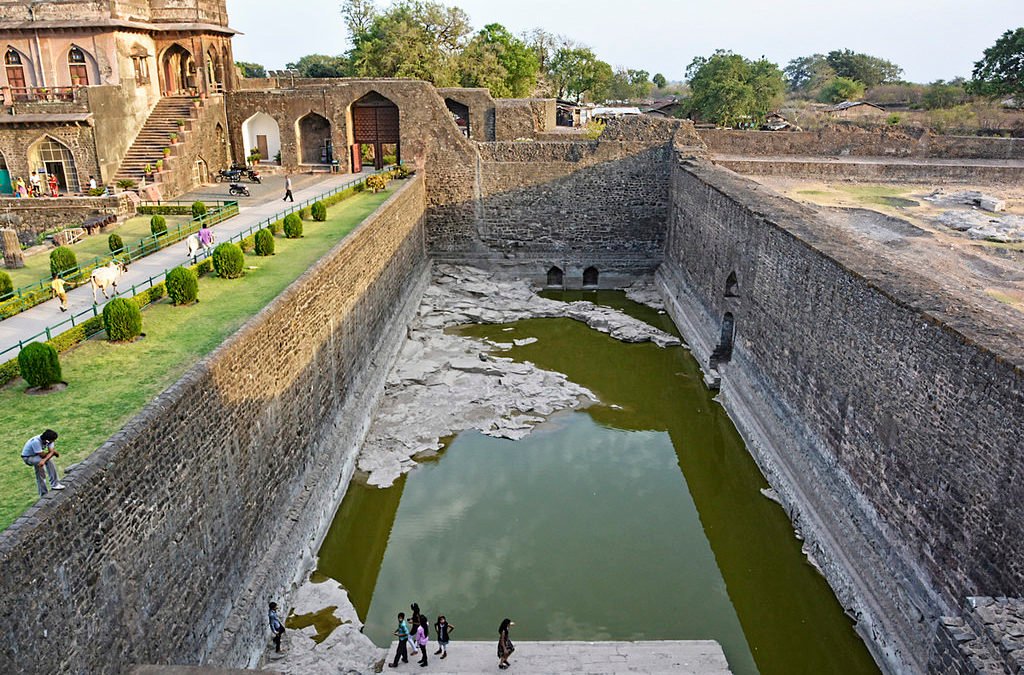India has various kinds of terrain which is challenging prospect when it comes to
water conservation. Here are ten traditional methods that are still used.
Having a varied terrain India poses a challenging prospect when it comes to water conservation
and water usage. One particular solution is thus not applicable to different areas of the country.
In addition, while the use of technology and advancement of science can provide ready solutions,
sometimes, traditional time-tested ways can help fulfill the requirements of people in a much
more effective way.
Here is a list of some of the traditional water conservation methods that are still in use:
Kul
Kuls are diversion channels that carry water from a glacier to village. Often spanning long
distances, with some over 10 km long, kuls have been around for centuries. They are the lifeline of
people of Spiti valley of Himachal Pradesh and in Jammu too.
Kul starts at the glacier, which is to be tapped. Keeping the head clear of debris is achieved by
lining the sides of Kul with stones which ensure that there is no seepage or clogging. The Kul leads
to the village where the water is stored in a circular water tank. The water is drawn from here are per the need of the village.

Bamboo Drip Irrigation System
This system of water conservation and usage of stream and spring water is done using bamboo
pipes. Practised in Meghalaya, its primary purpose is to irrigate plantations. This 200-year-old
system involves 18-20 litres of water entering the bamboo pipe system every minute to irrigate the
fields downhill. A brilliant drip irrigation system, it uses bamboos of various sizes and reduces the
output to to 20-80 drops per minute, which is splendid for betel leaf and black pepper crops.
The whole irrigation system is made up of different forms of bamboo pipes of varying cross
sections which take the water from perennial springs on the tops of the hill. The flow of water is
controlled by the changing pipes positions. The method is so efficient that it enables the water to
be dropped at the base of the plant to ensure there is no runoff and wastage.

Johads
Alwar district of Rajasthan is one of the driest regions in India with water scarcity being a common
occurrence. After the drought of the 1980s, the villagers attempted to revive the traditional
method. Johad, a crescent shaped small check clam built from earth and rock to intercept and
conserve rainwater, was thus reinvented. This helps to improve percolation and increases
groundwater recharge.
By recharging the aquifer below the surface, johads have helped increase agriculture in the area.
Usage of _Wads has also helped increase the flow of river Arvari, making it a perennial river now.
It earlier used to dry off after the monsoon.

Zabo
Zabo means impounding water. Known locally as the Ruza system, this system is a unique
combination of water conservation with animal care, forests and agriculture. Mostly practised in
Nagaland, Zabo is used to deal with a lack of drinking water supply. During monsoon, rainwater
that falls on the hilltops is collected into the pond like structures that are carved out on the
hillsides. The water is then passed onto cattle yards below from where the water enters the paddy
fields rich in manure.
The paddy fields can be used to rear fishes as well thus giving a yield of about 50-60 kg/ hectare
as extra output. Quite a few medicinal plants and herbs are also grown nearby. These ponds are
made in such a way that water distribution is uniform.
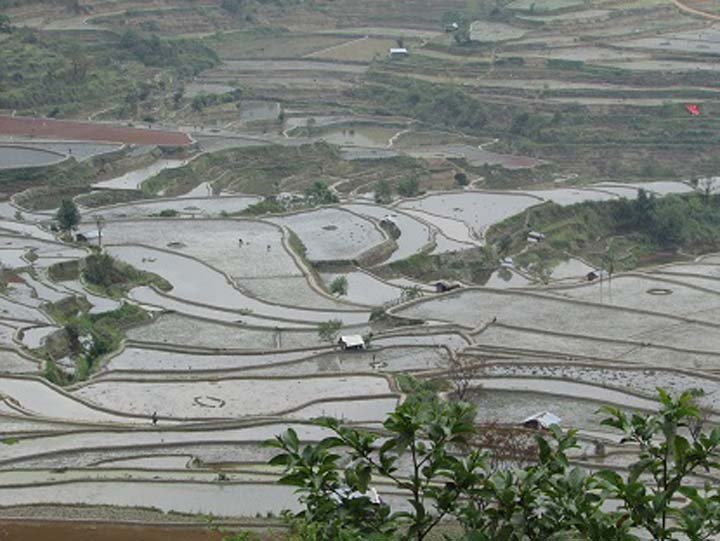
Eri
One of the oldest water conservation systems in India, Eri (tank) of Tamil Nadu is still widely used
around the State. With over a third of irrigation in the State being made passible due to Eri, the
traditional water harvesting system plays an important part in the agriculture. They also have
other advantages such as prevention of soil erosion, recharge of groundwater, and flood control.
Eri can either be fed through channels that divert river vvater, or rain-fed ones. They are usually
interconnected to balance the water in case of excess or lesser supply.
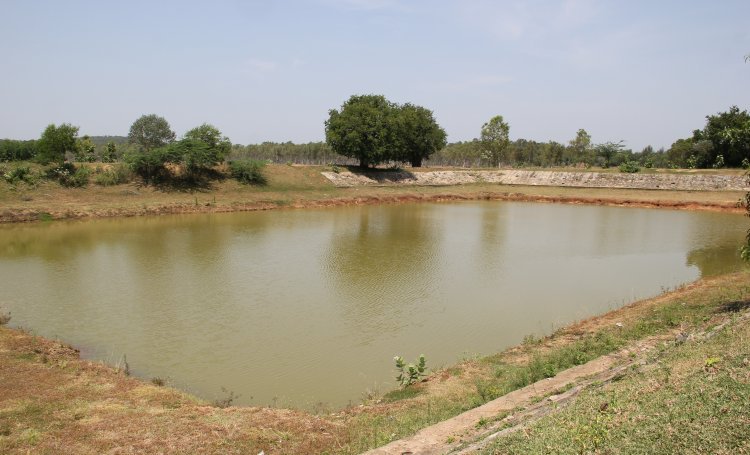
Khadin
Khadin is a water conservation system designed to store surface runoff water for the purpose of
agriculture. It entails an embankment built around a slope, which collects the rainwater in an
agricultural field. This helps moisten the soil and helps in preventing the loss of topsoil.
Additionally, spillways are provided to ensure that excess water is drained off.
This system of water conservation is common in the areas onaisalmer and Barmer in Rajasthan. A
dug well is usually made a bit further from Khadin to additionally take advantage of groundwater
recharging that happens around the structure.

Virdas
Developed by the nomadic Maldhari tribes of Rann Of Kutch, virdas are shallow wells dug within a
natural depression(Jheel). Since the area around is very saline, when rainwater seeps down the
soil, it collects over the saline groundwater due to the difference in density (rainwater being less
dense). The tribesmen identify areas on basis of flow of the monsoon runoff and build these
shallow wells.
This smart method helps them separate freshwater from saltwater and provide water far a variety
of purposes. Vegetation is planted along virdas to help protect them.
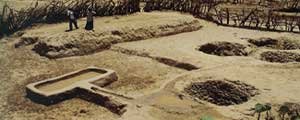
Surangam
Surangam is a traditional water conservation system present in areas of Karnataka and Kerala. The
terrain of the area makes it impossible for people living around to survive only on surface water.
Thus a complex labyrinth of fine tunnels are built which constitutes horizontal wells dug in laterite
rocks. The Surangam can be of varying length and can even go up to 300 metres. Water is
collected into a storage tank using gravitational force. Vertical shafts are provided for airflow.
The population nearby depends mainly on these horizontal wells for their water requirements.
They are also used to irrigate crops such as paddy and coconut. What is also important that the
water from Surangam is of good quality.

Ahar Pynes
This is a water conservation technique indigenous to South Bihar. Due to a variety of reasons
including sandy soil. temporal river flow, low groundwater levels etc, floodwater harvesting is
considered as the most suitable option for the area.
Char consists of a catchment basin embanked on three sides, at the end of a rivulet or a canal that
leads from a river. Pynes are artificial channels, which were constructed to use river water for
agricuiture. The process starts from the river, from where the water goes to pynes and eventually
lands up in an ahar. Although the system suffered under British rule, it has again been
rejuvenated for agricultural purposes, especially in the district of Gaya.
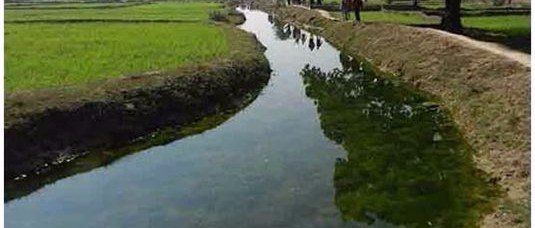
Kunds/Kundis
With the look of an upturned cup nestling in a saucer, these water conservation structures are
built to harvest rainwater. Usually dotting the areas of Rajasthan and Gujarat, they have a saucer
shaped catchment area sloping towards the centre to where the well is situated.
To prevent debris from falling into the well, a wire mesh is used while the sides of the well pit are
covered with lime and ash, which act as a disinfectant. Usually, the depth and diameter of these
kunds depend upon the purpose of use i.e. drinking or for domestic usage.
There are many other methods too that are practised in various combinations. These methods
have been around for hundreds of years, and with a lot of areas suffering from water scarcity, it
may be time to revisit some other traditional methods to help innovate new ways of revival.
Using these methods, we can help combat monsoon failure by rain water conservation.

Tags: new technology utilised for water conservation, can technology help in water conservation, technologies for water conservation, water saving technologies for agriculture, water conservation technology in india, water conservation in india, new methods of water conservation.

